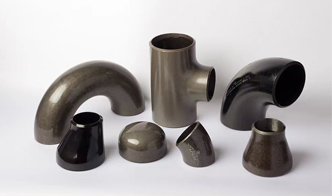-
Cangzhou Yulong Steel Co., Ltd.
-
Phone:
+86 13303177267 -
Email:
admin@ylsteelfittings.com
- English
- Arabic
- Italian
- Spanish
- Portuguese
- German
- kazakh
- Persian
- Greek
- French
- Russian
- Polish
- Thai
- Indonesian
- Vietnamese
- Zulu
- Korean
- Uzbek
- Hindi
- Serbian
- Malay
- Ukrainian
- Gujarati
- Haitian Creole
- hausa
- hawaiian
- Hebrew
- Miao
- Hungarian
- Icelandic
- igbo
- irish
- Japanese
- Javanese
- Kannada
- Khmer
- Rwandese
- Afrikaans
- Albanian
- Amharic
- Armenian
- Azerbaijani
- Basque
- Belarusian
- Bengali
- Bosnian
- Bulgarian
- Catalan
- Cebuano
- China
- China (Taiwan)
- Corsican
- Croatian
- Czech
- Danish
- Esperanto
- Estonian
- Finnish
- Frisian
- Galician
- Georgian
- Kurdish
- Kyrgyz
- Lao
- Latin
- Latvian
- Lithuanian
- Luxembourgish
- Macedonian
- Malgashi
- Malayalam
- Maltese
- Maori
- Marathi
- Mongolian
- Myanmar
- Nepali
- Norwegian
- Norwegian
- Occitan
- Pashto
- Dutch
- Punjabi
- Romanian
- Samoan
- Scottish Gaelic
- Sesotho
- Shona
- Sindhi
- Sinhala
- Slovak
- Slovenian
- Somali
- Sundanese
- Swahili
- Swedish
- Tagalog
- Tajik
- Tamil
- Tatar
- Telugu
- Turkish
- Turkmen
- Urdu
- Uighur
- Welsh
- Bantu
- Yiddish
- Yoruba

Oct . 22, 2024 12:16 Back to list
Types of Stainless Steel Flanges and Their Applications
Understanding SS Flange Types A Comprehensive Overview
Flanges play a crucial role in the piping industry, providing a means to connect pipes, valves, and other equipment, facilitating easy assembly and disassembly. Among the variety of materials available, stainless steel (SS) flanges are particularly popular due to their excellent corrosion resistance, durability, and aesthetic appeal. This article will delve into the different types of stainless steel flanges available, highlighting their unique characteristics and applications.
1. Types of Stainless Steel Flanges
There are several types of stainless steel flanges, each designed to meet specific requirements in various industrial applications. The most common types include
- Weld Neck Flanges These flanges are characterized by a long neck and are often used in high-pressure applications. The design allows for a smooth transition from the flange to the pipe, minimizing turbulence and making them ideal for welded connections.
- Slip-On Flanges As the name implies, slip-on flanges are designed to slip over the end of a pipe. They are easy to install and align, making them a popular choice for low-pressure applications. However, they require a fillet weld to ensure a secure connection.
- Blind Flanges Blind flanges are solid and do not have a bore. They are used to close the end of a piping system. This type of flange is essential for allowing access to the interior of a pipeline for inspection, maintenance, or cleaning purposes.
- Socket Weld Flanges These flanges are designed to be welded to the pipe using a socket. They are typically used in high-pressure applications and offer strong connections. Additionally, they can accommodate thermal expansion and contraction, which is crucial in fluctuating temperature environments.
- Threaded Flanges These flanges come with internal threads that allow them to be screwed onto the pipe. They are ideal for use in systems where welding is not feasible. However, they are generally not recommended for high-pressure applications.
- Lapped Joint Flanges These flanges are used in conjunction with a stub end. The design allows for quick disassembly, making them suitable for applications requiring frequent inspections or maintenance.
2. Material Specifications
Stainless steel flanges come in various grades and finishes, with the most common being ASTM A182 and ASTM A240
. The most frequently used grades aress flange types

- 304 Stainless Steel This grade is known for its good corrosion resistance in a wide range of environments. It is commonly used in food processing, chemical, and petrochemical applications.
- 316 Stainless Steel This grade offers enhanced corrosion resistance compared to 304, especially against chlorides. It is widely used in marine environments and for applications requiring high sanitation standards, such as pharmaceuticals.
- Duplex Stainless Steel This type combines the properties of both austenitic and ferritic stainless steels, providing high strength and excellent resistance to stress corrosion cracking. It is especially useful in oil and gas applications.
3. Applications
Stainless steel flanges are used across various industries, including
- Oil and Gas Due to their high resistance to corrosion and high pressure, stainless steel flanges are widely used in offshore platforms and refineries.
- Food and Beverage Their cleanability and non-reactive properties make stainless steel flanges essential in food processing plants.
- Chemical Processing Given their robust mechanical properties, stainless steel flanges are employed to handle corrosive substances safely.
- Marine Applications 316 stainless steel flanges are predominantly used in marine environments because of their ability to withstand harsh conditions.
4. Conclusion
In summary, stainless steel flanges are integral components in various piping systems. Understanding the different types and their specific applications ensures that engineers and project managers can choose the right flange for the job, optimizing performance and safety. As industries continue to evolve and demand more from their components, the importance of selecting the appropriate stainless steel flange type cannot be overstated. Whether in oil and gas, food processing, or marine applications, the right stainless steel flange can make a significant difference in system reliability and durability.
Latest news
-
ANSI 150P SS304 SO FLANGE
NewsFeb.14,2025
-
ASTM A333GR6 STEEL PIPE
NewsJan.20,2025
-
ANSI B16.5 WELDING NECK FLANGE
NewsJan.15,2026
-
ANSI B16.5 SLIP-ON FLANGE
NewsApr.19,2024
-
SABS 1123 FLANGE
NewsJan.15,2025
-
DIN86044 PLATE FLANGE
NewsApr.19,2024
-
DIN2527 BLIND FLANGE
NewsApr.12,2024
-
JIS B2311 Butt-Welding Fittings LR/SR 45°/90° /180°Seamless/Weld
NewsApr.23,2024











